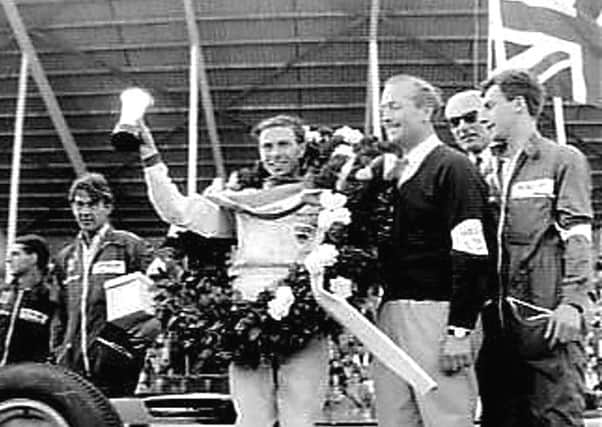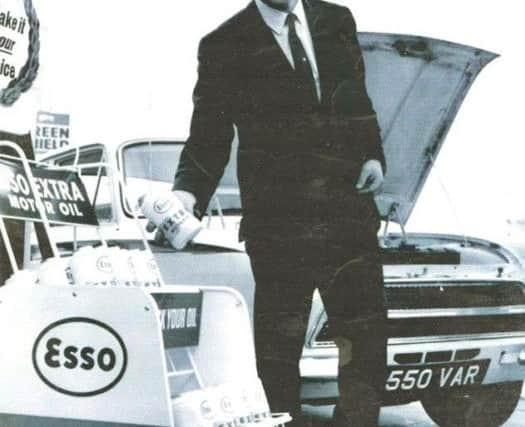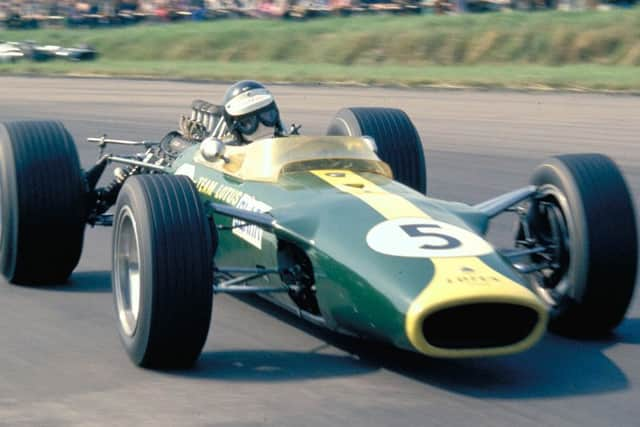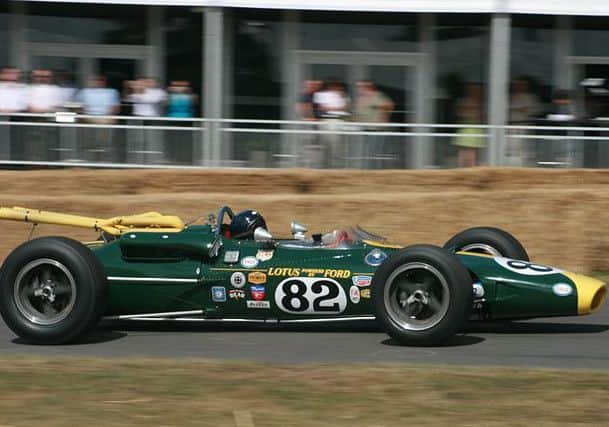The story of F1 world champion Jim Clark


The world of Formula 1 in the 1960s was a treacherous place, far removed from the safety barriers and crash-tested cars of today.
With six drivers killed at F1 weekends between 1960 and 1967 and the total absence of electronic driver aids such as anti-lock brakes, motor racing was a blood sport which horrified as much as it entertained.
Advertisement
Hide Ad

Twenty years later, the young Scot was competing in hill climbs and rallies, affording him greater recognition off the back of his precocious driving talent. His jump to the big leagues of the sport came when he raced against Lotus sports car company founder Colin Chapman and finished second in a GT race at Brands Hatch at the helm of a Lotus Elite, impressing Chapman with his raw speed.
Clark made his debut behind the wheel of a Lotus F1 car at the Dutch Grand Prix in 1960, with his talent making itself felt by the second race at Spa-Francorchamps in Belgium. His fifth place points-scoring finish in only his second-ever Formula 1 race was marred by the deaths of two British drivers, Chris Bristow and Alan Stacey, less than six laps apart. This weekend was to be the bloodiest in the sport until the 1994 Imola Grand Prix saw the deaths of Aryton Senna and Roland Ratzenburger.
Less than a year later, Clark was involved in a fatal accident at Imola in Italy, when the Ferrari of Wolfgang von Trips collided with Clark’s Lotus and speared into the crowd. Both the German driver and multiple spectators were killed.
International acclaim arrived in 1963, when Clark piloted his Lotus 25 to victory in seven of the ten races that season, securing both the Driver’s and Constructors Championships. The same year had also seen him finish second in the Indianopolis 500; one of the most famous motor races in the world held over 500 miles in the United States.


A notable victory came at Spa-Francorchamps in his first title-winning year amidst the fog and rain typical of the forest circuit. After starting the race in 8th position, the Scot took the lead and by the end of the first third of the race had lapped the entire grid except for second-placed Bruce McLaren in his Cooper F1 car.
Advertisement
Hide AdFalling at the last hurdle in 1964’s title fight thanks to an oil leak, Clark would have to wait until 1965 to win his second F1 World Championship title - and also his first Indy 500 victory - while installed inside the Chapman-designed Lotus 38. Clark staged a heroic comeback in the 1967 Italian Grand Prix when, a lap down after a flat tyre was changed, he fought his way back into the lead from sixteenth position and matched his qualifying session lap time in the process.
After a scintillating win to open the 1968 F1 season, Clark took part in a relatively minor Formula Two race on behalf of tyre sponsors Firestone at the picturesque Hockenheimring circuit in Germany. Early on in the first race of the day, Clark’s Lotus 48 veered sharply off the track and smashed into trees. Given the fragile construction of the lightweight Lotus along with F1 cars of the day, Clark suffered a broken neck and skull fracture.
Advertisement
Hide AdHe died before paramedics could save him at the hospital, with team boss Colin Chapman commenting to media shortly after the event that he had lost a friend as well as a driver. Jim Clark is buried in Chirnside, Berwickshire, and a memorial stone has been erected at the German circuit where he lost his life. A statue of Jim Clark in racing overalls has been erected in his home town of Kilmany.


To this day, Clark remains the only driver to have won the F1 drivers’ title and the Indianopolis 500 endurance race in the same season (1964). Out of his 72 Grands Prix starts, Clark won 25 races and achieved just over 30 pole positions.